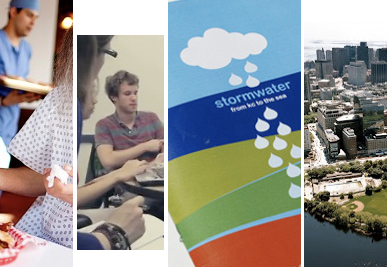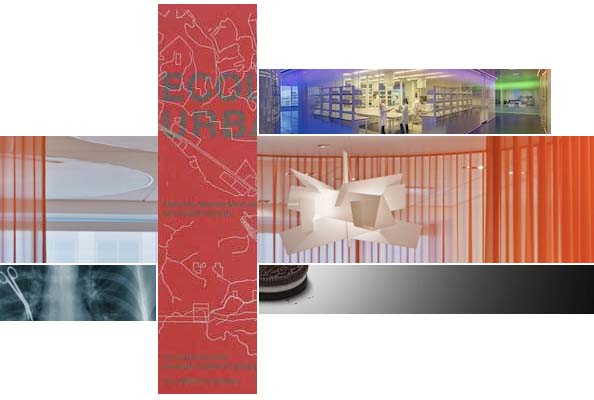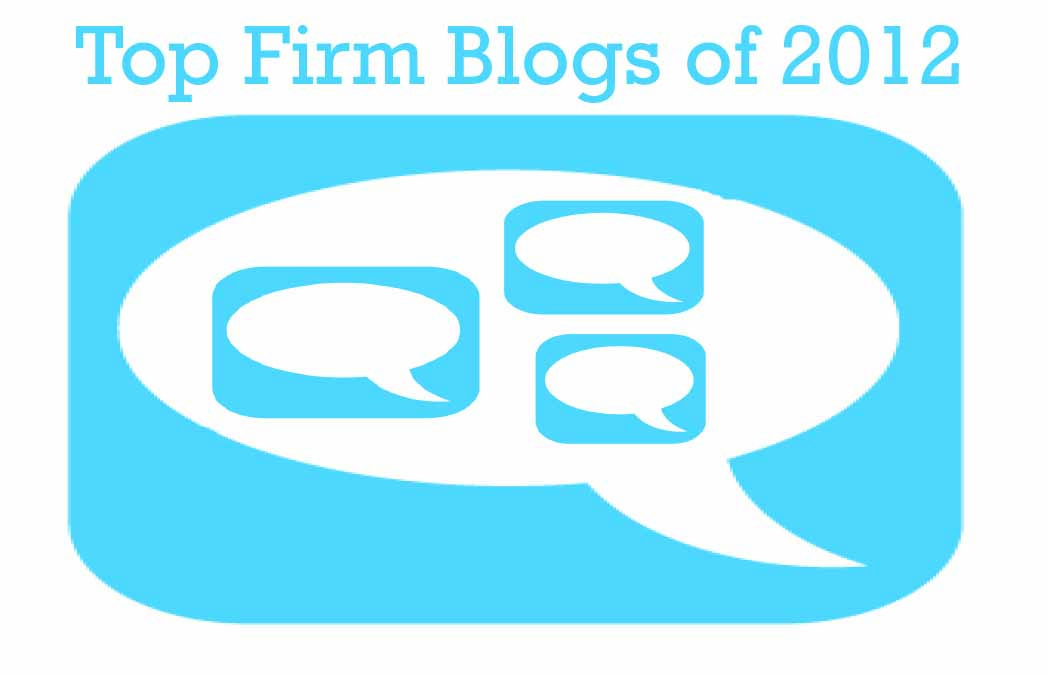HMC's world-changing innovation. BNIM teaches kids about water. A Stantec POV on urban or suburban. Catapult Design on understanding others to understand yourself.

Innovation to change the world. Steve Prince, managing principal at HMC Architects, discusses the video “Making of the Social Rules Project” spearheaded by Professor Paul Steinberg, which was made in part with a $5,000 grant awarded for an innovative environmental sustainability education initiative to Harvey Mudd College from the Design Futures Foundation.
Prince interviews Steinberg on how the project came to fruition and the next steps for the video.
“The Social Rules Project itself grew organically–first as a book for the general public, then an idea for an animated film, and eventually a video game and social media website. There came a point when, with 100 students busily working on these various projects, we realized that we’d better start documenting this remarkable collaboration on film.” – Paul Steinberg
Educating kids on water. BNIM works with consultant Chris Becicka to create a curriculum for the classroom on Kansas City’s stormwater and how people impact it.
BNIM developed a five-day curriculum full of information and activities, putting their ideas and pictures into a book called “Stormwater KC to the Sea.” BNIM found all the materials the teachers would need, created a kit for them, and then piloted the program, first inviting teachers to a training session.
Via BNIM Blog
Urban core or suburbs? Joe Geller, vice president at Stantec, explores the challenges of urban development in the Boston area based on what the millennial generation wants.
Geller writes that be thinks Boston and similar cities will be seeing a lot more re-urbanization and densification and less focus on intensified suburban development.
“If people are in school longer, waiting longer to get married, not having as many kids, and are looking for a real urban experience, why would they move to the suburbs? Can these suburban developments continue to attract the high-tech employers that rely on that demographic to support their business if they now all want to live in the city? If one of the biggest challenges to future development is transportation, are suburban locations, with their limited public transportation and reliance on highway infrastructure, really well positioned to support this type of growth? Can these suburban developments create the buzz necessary to attract the expected 24/7 experience?” – Joe Geller
Via Stantec Blog
Understanding others to understand yourself. Tyler Valiquette, COO and cofounder of Catapult Design, examines people’s behavior and how they often resist changes to their accustomed behaviors. In order for designers and engineers, who are always addressing social issues, to be successful, they need to work on overcoming this behavior.
How do we attempt to tackle culturally instructed behavior? Valiquette says that contemporary psychological theories of behavior change tell us that people’s behaviors are based on attitudes, beliefs, and values and that changes in behavior rely on changes in these underlying attributes. “In the field of design for social impact the theories of behavior change and human-centered design converge and they both clearly indicate that an understanding of values is key: successful designs appeal to people’s values and so do successful behavioral change campaigns.” – Tyler Valiquette
 Agents of change in AEC. Thought leadership is a topic Walter Communications discusses frequently, and we would like to learn more about the prevalence of it within the Built Environment industry. We invite you to take our survey and let us know your thoughts on thought leadership and in return, we'll share our full report of findings with you.We are also profiling firms with noteworthy thought leadership programs -- you can view highlights of these discussions, such as the profile of the research program at Eskew+Dumez+Ripple.
Agents of change in AEC. Thought leadership is a topic Walter Communications discusses frequently, and we would like to learn more about the prevalence of it within the Built Environment industry. We invite you to take our survey and let us know your thoughts on thought leadership and in return, we'll share our full report of findings with you.We are also profiling firms with noteworthy thought leadership programs -- you can view highlights of these discussions, such as the profile of the research program at Eskew+Dumez+Ripple.



 We read a lot of blogs from design and planning firms. When we surveyed the A/E industry in 2011, only 16% of our respondents were blogging. This number has certainly gone up, but more importantly, so has the quality. The blogs that consistently post interesting content bring readers back for more. These contribute new ideas and perspectives to the public, and on a broader level, they add to the laypersons’ understanding of the related professions’ role in our communities and society as a whole.
Many firms still don’t see the value of blogging and I hope we’ll see more converts to this form of communication in 2013. Blogs are more than an outlet for project descriptions and photos. They help your public audiences get a better sense of what your firm is about and the quality of ideas that you’ll bring to the table. When the practice of blogging is interwoven into the firm’s routine of work, the blog quickly becomes a collection of relevant content on topics that vary as much as the personalities within the firm itself. This content is also immensely valuable to search engines which favor newly published content – making it easier for outsiders who are looking for information on the topics covered in your blog to find your post. These encounters can the beginning of new relationships and opportunities.
We read a lot of blogs from design and planning firms. When we surveyed the A/E industry in 2011, only 16% of our respondents were blogging. This number has certainly gone up, but more importantly, so has the quality. The blogs that consistently post interesting content bring readers back for more. These contribute new ideas and perspectives to the public, and on a broader level, they add to the laypersons’ understanding of the related professions’ role in our communities and society as a whole.
Many firms still don’t see the value of blogging and I hope we’ll see more converts to this form of communication in 2013. Blogs are more than an outlet for project descriptions and photos. They help your public audiences get a better sense of what your firm is about and the quality of ideas that you’ll bring to the table. When the practice of blogging is interwoven into the firm’s routine of work, the blog quickly becomes a collection of relevant content on topics that vary as much as the personalities within the firm itself. This content is also immensely valuable to search engines which favor newly published content – making it easier for outsiders who are looking for information on the topics covered in your blog to find your post. These encounters can the beginning of new relationships and opportunities.